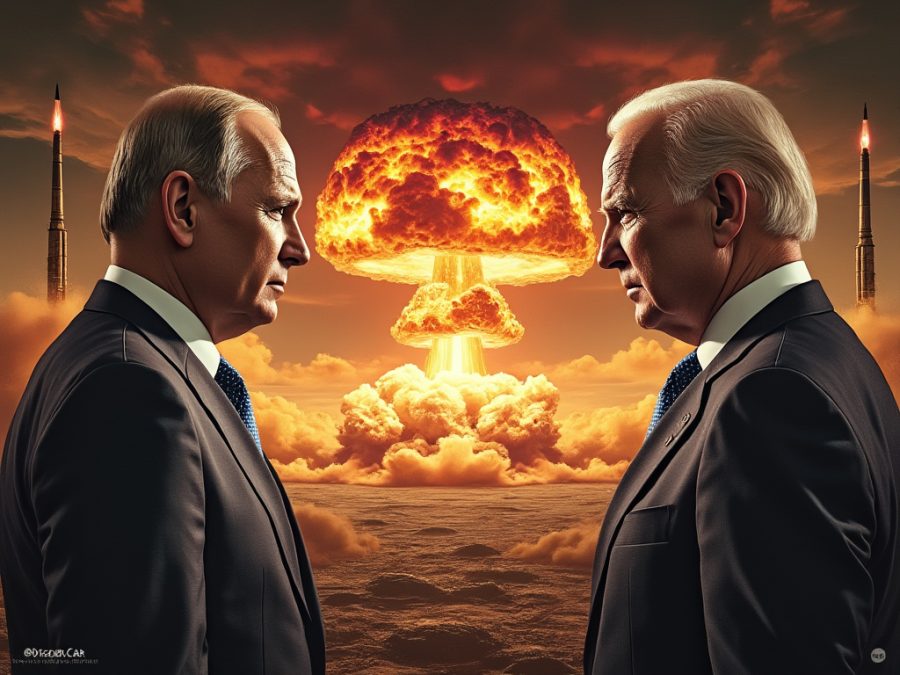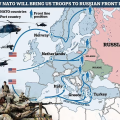
In a move that has sent shockwaves through global politics, President Joe Biden has authorized the deployment of U.S.-provided Army Tactical Missile Systems (ATACMS) by Ukraine, allowing strikes deep within Russian territory. This decision comes at a time when Russian President Vladimir Putin has revised his country’s nuclear doctrine, lowering the threshold for nuclear weapon use. This confluence of events paints a chilling picture of potential nuclear escalation and the specter of a third world war.
A High-Stakes Policy Shift
- Biden’s Authorization: The authorization allows Ukraine to target Russian military and logistical assets in the Kursk region, a response to Russia’s strategic use of North Korean troops in the conflict.
- Putin’s Nuclear Doctrine Update: Russia has amended its nuclear policy to potentially include nuclear retaliation against conventional attacks if they are perceived as threatening the country’s sovereignty, especially if they involve nuclear powers or their allies.
The Path to Nuclear Confrontation
- Escalation Dynamics: By permitting these strikes, Biden’s administration risks escalating the conflict from a regional war into a direct confrontation involving NATO and Russia. Historical parallels, like the Cuban Missile Crisis, remind us how quickly such escalations can spiral out of control.
- Nuclear Doctrine’s Role: Putin’s updated nuclear policy signals a readiness to respond with nuclear weapons under broader circumstances, potentially interpreting long-range missile attacks as a precursor to nuclear aggression or an existential threat.
- The Domino Effect: A single nuclear strike could trigger a chain reaction of retaliatory actions. The fear here isn’t just of an isolated nuclear incident but of how it might escalate into a full-scale nuclear exchange, involving not just Russia and the U.S., but potentially China and other nuclear powers.
Why the Risk?
- Strategic Miscalculation: The move might be intended to deter further Russian aggression, but it risks misinterpretation by Moscow as an all-out escalation, pushing both nations closer to the nuclear brink.
- Theater of Deterrence: By showing willingness to arm Ukraine with such capabilities, the U.S. might aim to deter Russia through the threat of escalation. However, this could backfire, with Putin feeling cornered and thus more inclined to use his nuclear arsenal as a deterrent or even offensively.
- The Endgame Strategy: Critics argue there’s a lack of a clear endgame. If the goal is to force Russia into negotiations, the strategy of arming Ukraine with long-range missiles could instead harden Russian resolve, prolonging the conflict and increasing the risk of nuclear use as a last-ditch effort to change the war’s trajectory.
Conclusion
Biden’s decision, juxtaposed with Putin’s nuclear policy adjustment, has set the stage for a dramatic and potentially cataclysmic escalation. This isn’t just about the use of conventional long-range missiles; it’s about how these actions might inadvertently lead to nuclear weapons deployment. The world stands on the precipice of a new Cold War era, where the moves made today could determine the survival or destruction of millions. The stakes have never been higher, as the international community watches, hoping against hope that diplomacy, not nuclear or conventional warfare, will dictate the next chapter of this geopolitical saga. The specter of World War III looms larger than ever, with each decision now carrying the weight of the world’s fate.








